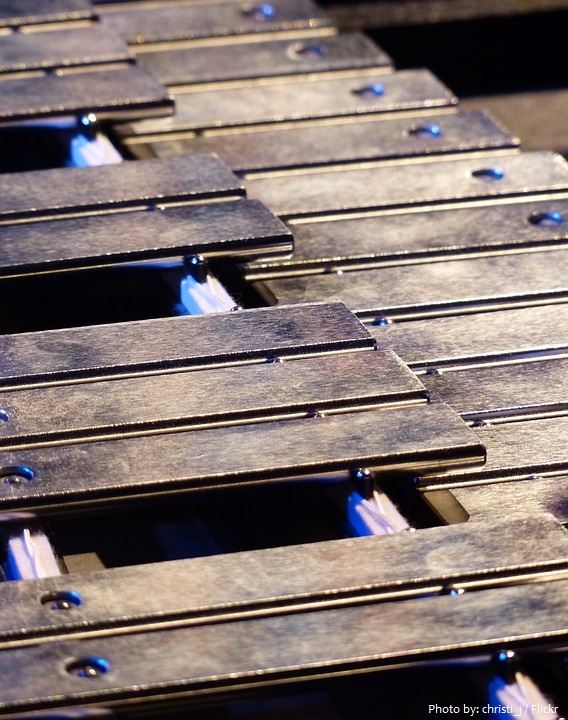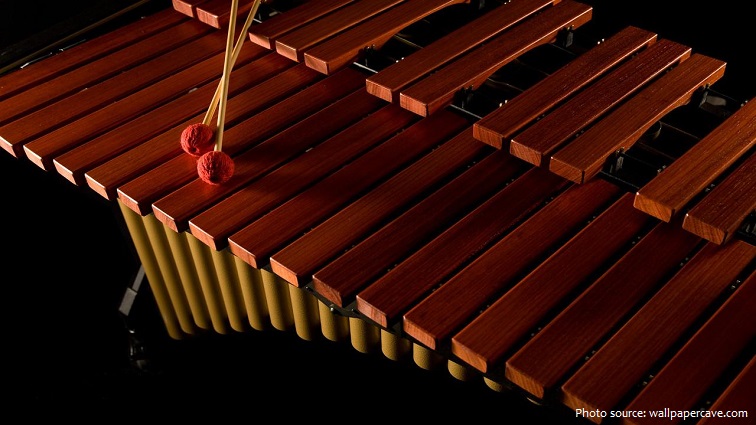
The xylophone is a musical instrument in the percussion family that consists of wooden bars struck by mallets.
It is essentially consists of a set of tuned keys arranged in the fashion of the keyboard of a piano. Each bar is an idiophone tuned to a pitch of a musical scale, whether pentatonic or heptatonic in the case of many African and Asian instruments, diatonic in many western children’s instruments, or
chromatic for orchestral use.
The term xylophone may be used generally, to include all such instruments such as the marimba, balafon and even the semantron.
However, in the orchestra, the term xylophone refers specifically to a chromatic instrument of somewhat higher pitch range and drier timbre than the marimba, and these two instruments should not be confused.
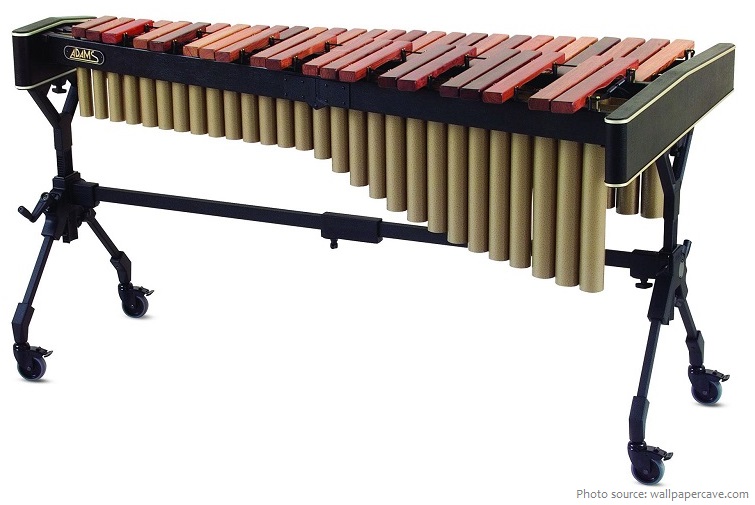
The origins of the xylophone lie in the far distant past and are difficult to trace.
Most historians believe that the first xylophones appeared in eastern Asia, whence they are thought to have spread to Africa.
In around 2000 BC a kind of wood-harmonicon with 16 suspended wood bars is said to have existed in China. At the same time a xylophone-like instrument called the ranat is reputed to have existed in Hindu regions. Proof that xylophones were widespread in south-east Asia is provided by numerous temple reliefs depicting people playing such instruments.
The first definite proof of the xylophone’s existence was found in the 9th century in south-east Asia. These primitive instruments were as simple as wooden bars laid across the player’s legs. The design began to evolve as resonators were added to the bottom of the bars. These increased the sustain of the notes. The early resonators were hollowed out gourds. Additionally, the instrument was placed on a stand.
In the 14th century, the xylophone began to gain popularity. Throughout the years, many different materials, such as bamboo and natural rubber, were used to construct different types of xylophones and mallets. This created many different variations of the xylophone, many of which still exist today. Some of these include the Mbila, Gyil, Marimba, and Gambang.
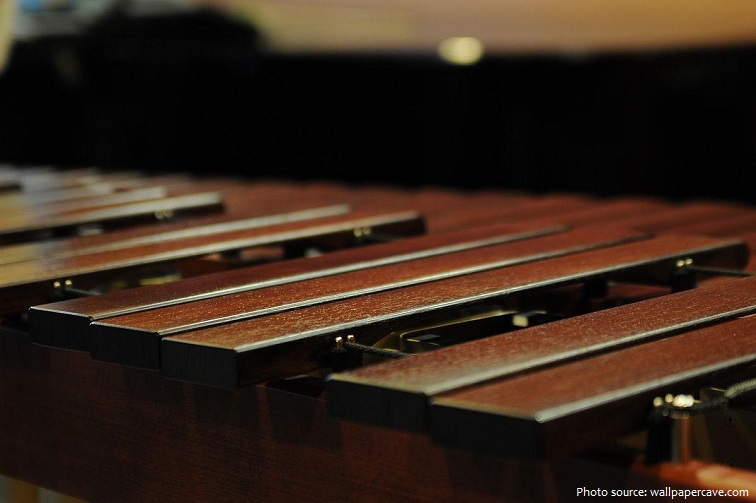
Although the exact date is not known, the xylophone was introduced to Europe sometime during the Crusades. The xylophone became very popular in Europe due to its use in folk music. However, these xylophones were still very simple and did not have resonators. Many different designs were created in Europe, including the creation of Michael Josef Gusikov, which was a four-rowed xylophone, and used the same notes as the piano. This was a major step towards the modern xylophone, as Gusikov was a well known virtuoso, and exposed the instrument to European concert audiences.
In the 17th century, African instrumentalists took the xylophone with them to Central America where it was modified and became known as the marimba. The marimba remains popular throughout Mexico and
Central America and is considered the national instrument of Guatemala.
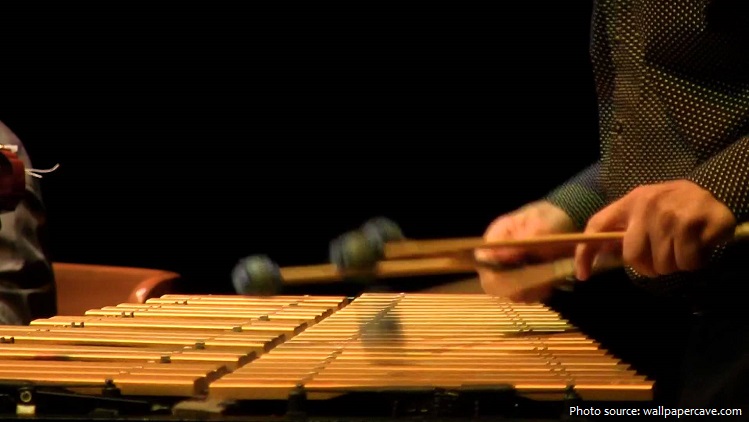
In 1886, Albert Roth introduced the idea of a two-rowed xylophone with a chromatic note pattern. This instrument is the modern instrument that we call the orchestral xylophone. The xylophone was created, and soon became a part of many orchestras and theater performances. In 1903, the American John Calhoun Deagan began to mass produce xylophones, and soon they were a part of nearly every orchestra.
The xylophone is a precursor to the vibraphone, which was developed in the 1920s.
In its 21st-century form the Western xylophone’s keys are usually arranged in two rows, somewhat like piano keys, on a stand – to improve the tone, a hollow groove is cut along the underside of each plate. Although rosewood is the favourite choice for plates, synthetic materials can be used. Tube resonators may also be provided.
Xylophones are tuned to different scale systems depending on their origin, including pentatonic, heptatonic, diatonic, or chromatic. The arrangement of the bars is generally from low (longer bars) to high (shorter bars).

They should be played with very hard rubber, polyball, or acrylic mallets. Sometimes medium to hard rubber mallets, very hard core, or yarn mallets are used for softer effects. Lighter tones can be created on xylophones by using wooden-headed mallets made from rosewood, ebony, birch, or other hard woods.
Notable works that use the Western xylophone prominently include Le Marteau sans maître (1954 – The Hammer Without a Master) by Pierre Boulez, The Golden Age (1930) by Dmitry Shostakovich, and the solo
piece Fantasy on Japanese Wood Prints (1965) by Alan Hovhaness. Western metallophones related to the xylophone include the glockenspiel and vibraphone.
The xylophone itself is an established player in an orchestra’s percussion array – but its range, repertoire, and opportunities for significant growth are limited by both tradition and possibility. In recent years, its close cousin the marimba has grown considerably in popularity because of the interest in Latin, jazz, and percussive music and a broadening of the repertoire. Music enthusiasts hope the xylophone will also increase in popularity, but it will assuredly be a valued orchestra member because of its unique musical voice.
